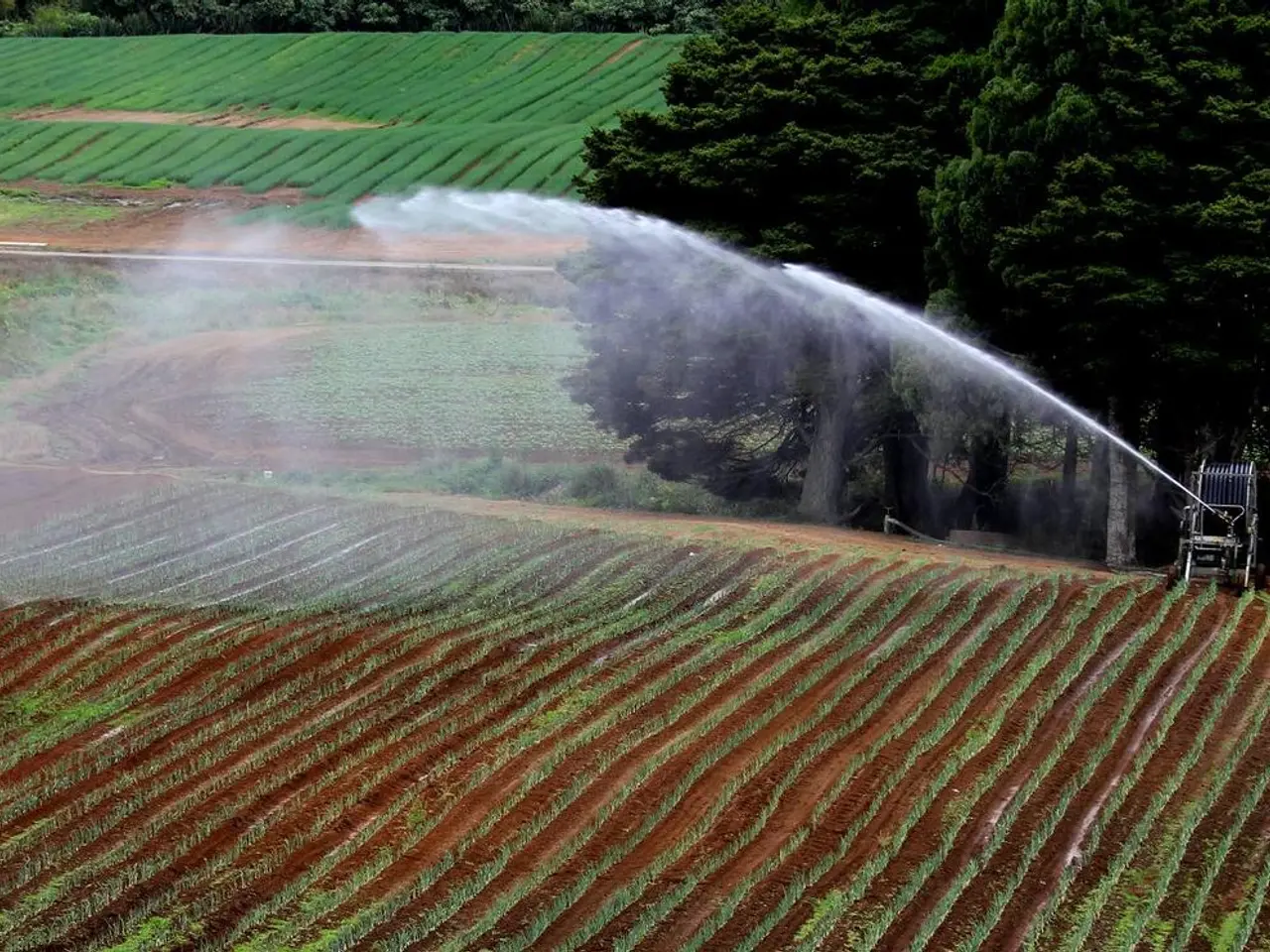Invesment Opportunities Expand to Agricultural Land and Natural Resources
In a world where China, with 18% of the global population and limited arable land, faces significant challenges in feeding its population due to urbanization and water scarcity, the finance world is taking action. The trend of increasing food insecurity, which has continued for six consecutive years, has affected 53 countries worldwide, according to the United Nations' latest Global Report on Food Crises.
The report indicates a net balance of 19 countries experiencing deteriorating situations and 15 territories with improvements. This stark contrast highlights the urgent need for sustainable farming solutions.
**Impact of Increasing Food Insecurity**
By 2024, about a third of the world's arable land has been degraded due to conventional farming methods, affecting crop yields and increasing vulnerability to climate shocks. This agricultural degradation contributes to about 25% of global greenhouse gas emissions, worsening climate change impacts on food systems.
Food insecurity leads to increased malnutrition, social instability, and economic losses, especially in regions dependent on rain-fed agriculture or fragile ecosystems. Arid and semi-arid lands face intensified water scarcity and soil fertility decline, undermining their capacity to produce sufficient and nutritious food.
**Strategies to Address Food Insecurity**
1. **Regenerative Agriculture:** This holistic farming approach restores soil health, sequesters carbon, and enhances biodiversity by utilizing practices such as cover cropping, crop rotation, reduced tillage, and agroforestry. It improves soil water retention and nutrient cycling, building ecosystem resilience while supporting sustainable food production.
2. **Circular Farming in Arid Lands:** Circular farming integrates waste management, water conservation, and soil restoration to create sustainable food systems in water-scarce regions. For example, in desert environments, technologies like natural clay soil amendments, subsurface drip irrigation, and soil microbiome enhancements help cultivate nutrient-rich crops like Moringa efficiently.
3. **Technological Innovations and AI:** Artificial intelligence and smart farming technologies enable precision agriculture, allowing real-time monitoring of soil, water, and crop health to optimize inputs and reduce waste. By 2024, over 70% of large farms plan to adopt AI-powered tools to improve crop management, which supports sustainability and resilience in agricultural systems.
**Examples of Sustainable Farming Solutions**
| Sustainable Solution | Description | Example/Implementation | |---------------------|-------------|------------------------| | Regenerative Agriculture | Restores soil organic matter, improves biodiversity, and mitigates climate change | Diverse crop rotations, cover cropping, agroforestry practices globally | | Circular Farming in Arid Lands | Waste-to-value model using smart irrigation, soil amendments, and microbial enhancement | Tanmiah's desert farming trials using Desert Control, Responsive Drip Irrigation, and Terraxy technologies in Saudi Arabia | | AI-Enabled Precision Agriculture | Data-driven monitoring and management of crop inputs to increase efficiency and sustainability | AI tools for crop surveillance and environmental monitoring adopted by large farms worldwide | | Integrated Pest Management (IPM) | Combining biological controls with selective chemical use to minimize pest damage and environmental impact | Use of pest-resistant cultivars and sensor-based early pest detection systems |
These strategies and innovations underscore a shift toward more resilient, resource-efficient farming that can adapt to climate change and demographic pressures, helping to reduce global food insecurity in the coming decades.
In summary, addressing increasing global food insecurity post-2024 requires embracing regenerative and circular farming methods, leveraging AI and digital tools for precision agriculture, and promoting integrated pest management. Together, these approaches offer promising pathways to secure sustainable food systems while restoring environmental health.
The finance world is responding to these challenges by defining investment strategies aimed at offering solutions. For instance, Nuveen Natural Capital participates in a multi-year initiative to improve sustainable food production in Chile through the use of composting worms to enrich soil conditions for hazelnut cultivation.
As the world's population continues to grow, so does the demand for resources, particularly water. The growing middle class in developing countries will consume more proteins, leading to a significant increase in cereal demand. Agricultural exports can be a method of transferring water from countries with abundant water resources to those with scarcer resources.
The OECD estimates that consumption of major animal proteins in developing countries will increase by 12.6% by 2032. To produce one kilogram of beef protein, about five kilograms of feed cereals are needed. Agricultural lands with sustainable water resources may see an increase in valuations due to the growing scarcity of water.
China's increasing dependence on agricultural imports is a result of population expansion, urbanization, and dietary improvement. The challenges and the need for solutions are global, affecting millions of people worldwide. It is crucial for all stakeholders to work together to ensure food security for future generations.
- The finance world's response to increasing global food insecurity involves defining investment strategies that offer solutions, such as Nuveen Natural Capital's multi-year initiative to improve sustainable food production in Chile through composting worms for enriching soil conditions.
- The trend of a growing global population necessitates increased resource consumption, particularly water, as the developing world's growing middle class consumes more proteins, causing a significant increase in cereal demand.
- To address this issue, agricultural exports can serve as a method of transferring water from countries with abundant resources to those with scarcer resources, and agricultural lands with sustainable water resources may see an increase in valuations due to the growing scarcity of water.







